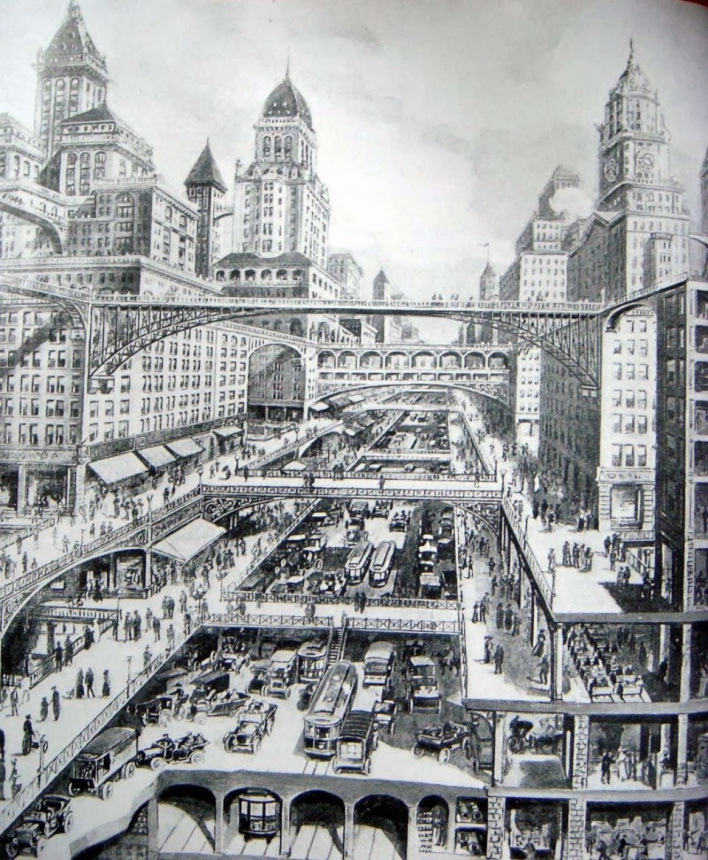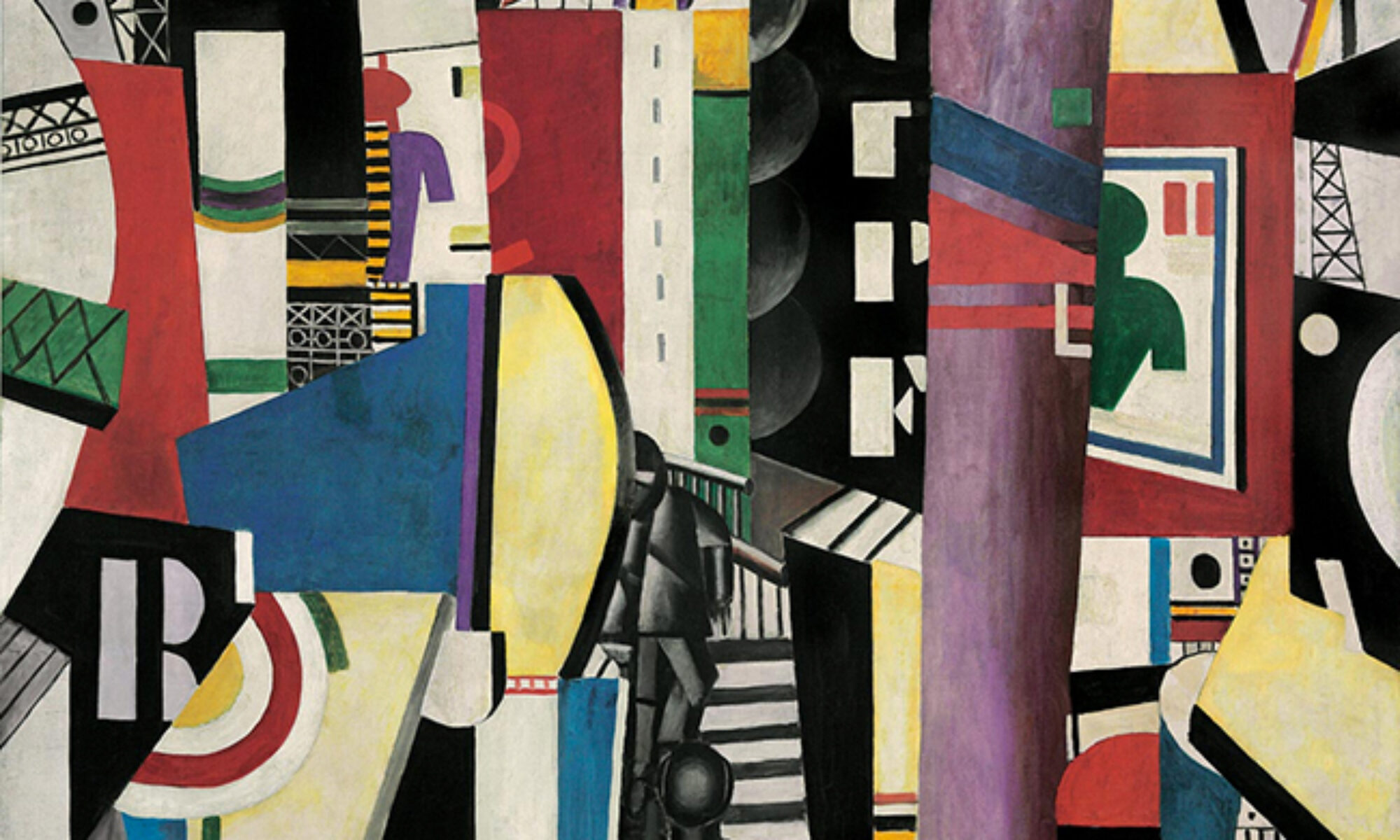Vincent Batts 9:30 ENGL 1102
As the idea of a city and what it can be grow with the acceptance of technology, opportunity, and cultural diversity, Atlanta appears to be on top of those expectations. It mirrors the city in the modernist area.
The city as a motif is key in the modernist area and in modernist literature. It represents the source of miniscule familiarity coupled with anonymity, and utter individual confusion. The city is a commonly used motif and one in which Atlanta gradually becomes synonymous with as time passes.


As the Figures 1 and 2 above show, transportation is a huge way a city’s population grows. It’s the cause of what most economist call “urban sprawl” and Atlanta compared to any other city in Southeast America is the center for urban sprawl. Everything in the art by Dong Kingman can be accessed by residents of the city and the metropolitan area. That aside, Atlanta’s airport, Hartsfield Jackson, is the busiest airport in the world. This trend of activity for individuals coming into the city and outside the city represent the ubiquitous anonymity found within it.
The anonymity that is coupled with Atlanta can be described from an historical aspect. It was 26 years prior to the start of the modernist period when Atlanta was first burned down on November 12, 1864. Since then, the city has climbed back in the matter of importance that shapes modern communities.

The picture I created (Figure 3) above is merely a highlight of the growth Atlanta has seen but even more so an image depicting that how that growth is blurry from the outside looking in. The biggest source of confusion for those who venture into the city is the idea that Atlanta is solely a tourist destination. The tall buildings and Ferris wheel that are the most recognizable are purposeful in that regard. If you were from the city, you would know the historic significance of the places surrounding the visible areas of the picture. Individuals don’t know the fact that all across the city are symbols representing the phoenix (which serves as a symbol for the city), showing how the city has risen from the ashes of the war that saw its demise. You would know that the same roads that everyone drives on use to be the paths for trains to ride along to produce and create effective trade across the metropolitan area before the tracks were ripped out the ground. Lastly, from the outside looking in, people are familiar with the African American culture that is popular now because of the city. In the same breath, it’s been my experience that Atlanta’s rich history for it’s most prominent individuals is relatively unknown.
Every statement that took precedent is just to exemplify the distorted since of knowledge and the subsequent lack thereof from individuals choosing Atlanta as a place to live. This means that those who choose to work here, attend college, or simply create an urban life further south will find more problems gaining a sense of familiarity with the natives and homegrown individuals of the city. There are plenty of well-established cities like Houston, New York, or San Francisco in which have adjusted to these plights. As for the immense jump in population and increased diversity Atlanta has seen, it’s inevitable it faces two prime modernist subjects, Progress and Anti-historicism. Both are key problems modernist cities have to deal with.

Anti, historicism deals with the process of moving forward within a community by ignoring the past that created said community. In an effort to make the Atlanta more appealing and focus on what it could be, a lot the cities history and the people that comprise history have been suppressed. The centripetal forces of commerce, culture, entertainment, and class that are located within the city have the cities underground market and neighboring territories left without much to desire. 10 miles south of the center you can find neighborhoods and stores in the West End district that are visibly not as funded, supported, or as upheld as the districts within downtown and midtown. However, in those areas, the factors that have made Atlanta come to be what it is now are most present. Art, museums, and roadways filled and named after historical events and people comprise much of the city’s external regions. Per the image above (Figure 4), street is prominent on bridges and underground trails. Further, in my creation of the image, I once again made that art even more difficult to recognize since its importance has merely been glossed over by the agenda to keep moving forward.
There is some significant good in the cities ability to move forward, however. In the most recent election, Atlanta and the metropolitan area were singlehandedly responsible for turning Georgia into a blue state. This makes the state synonymous with modernist politics and ideals. The city then takes on once again , Progress, but another theme the modernist city falls within which is Internationalism. It’s the cities garnering of so much ethnic variety that democratic ideals persevered in the voting process. This remained true in the state’s runoff election to elect two Democratic Senators (one of which was black).


Moving away from the politics and cultural significance in the city, a common theme of the city was the intimidating nature of the architecture, Per Figures 5 and 6 we can see the key characteristics composers tried to idealize, especially of established cities like New York or London. These cities featured tall buildings, rivers than split roads and narrow streets. We see the abundance of cars, buses, trains, and even planes that fly over the city. We see hubs for individuals unknown to each other to gather, converse, trade, and traverse across the city. This is the idea of the future, a future in which we reside currently, and a future Atlanta (amongst cities) can be described with.
In the terms of architecture for the modernist city, function, and technology, were key in the design of today’s buildings. Occasionally, buildings with extravagant designs are present but not popular unless the cities origin originate from that of European influence. The buildings in Figures 5 and 6 are safe to be assumed as locations for offices to do perform business or for apartment locations for residences. That assumption is proven fact in Atlanta. As more businesses migrate to Atlanta not only for commerce but for the tech and film hub the city has become, it’s welcomed the finances to create more office space and invite more individuals looking for job opportunities. It’s also the reason why 10 colleges can be found with a 10-mile radius of the center of Downtown Atlanta.
Atlanta more than any city in the southeast has seen more businesses like Microsoft, UPS, and Amazon re-locate their headquarters, warehouses, and other facilities into and around the city. Universities within the city like Georgia Tech have created more opportunity through the constant addition of more office facilities and campus centers for students, teachers, and faculty alike to congregate. In the year of 2021 alone, Atlanta will see 3 8 plus story student apartments spring up and add to the market of residential spots. This is a trend that has seen 10 apartments add to the midtown area in the past 10 years to compensate for the influx of people the neighboring universities could not house on campus. The influx of people in recent years has also made the city expand its transportation service to outer regions of the metropolitan area. This is done an effort to attract more people to feel comfortable doing and drawing business to the city.
The downside of all this influx is once again the confusion and anonymity that comes with it. I’ve had a lot of experience talking to adults and students alike that haven’t lived in Atlanta but merely came because of job opportunities or school. Their answers are extremely similar in how they express the overwhelming nature that comes from the city. They are used to suburban neighborhoods and shopping centers as opposed to shopping malls and business districts coupled with universities and apartments. They mention how compact all of it is which makes the experience even more overwhelming and unwelcoming at times. Where a Dallas or L.A may have houses and suburbs in pockets of the city, you have to venture to the greater Atlanta area (outside downtown and midtown) to even experience the calmer aspects of the region.

Figure 7 really captures the true essence of Atlanta. It’s an essence that emphasizes the cities unique potential as opposed to the counterparts I’ve often compared it to throughout this blog. Atlanta is at heart, a city that still has a long way to go. It’s a city that mirrors and at the same time reshapes the context of a modernist city. Away from the complexities of its culture or the presence of the architecture and style it comprises do we find a substantial duality. The people of the city will grow in unfamiliarity with each other but the city itself will grow more familiar to those who reside in it. That’s where the thought behind figure 7 comes from. It’s a lot more visible to see what’s in the picture but depending on where you look, you may see the city from a different perspective (color) . That in itself may lead to more anonymity and confusion but those are the keys of the city in modernism and why Atlanta is redefining the modern city.
